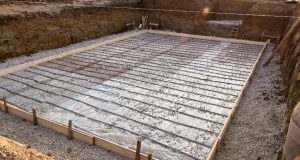Function of building foundation
Category: Civil Engineering
1 May 18
The function of building a foundation
- The low artificially built part of a structure which transmits the load of the structure to the ground is called foundation.
-
Foundation of a structure is always constructed below the ground level so as to increase the lateral stability of the structure. It includes the portion of the structure below the ground level and is built, so as to provide a firm and level surface for transmitting the load of the structure on a large area of the soil lying underneath. The solid ground on which the foundation rests is called the Foundation Bed.
- To distribute the load of the entire structure over a widespread area to prevent it from any movement.
- To distribute the load on underlying soil evenly thus to prevent unequal or differential settlement of the foundation.
- To provide a leveled and hard surface for supporting the superstructure.
- To increase the stability of the structure as a whole against sliding, overturning and or other disturbing forces like wind etc.
- To prevent any lateral escape of the supporting as it will endanger the structure.
- To load the bearing surface at a uniform rate so as to prevent unequal settlement.
- Buildings are produced by the coordination of the inputs of a group of people, under the provisions of a guiding law called the building regulations.


